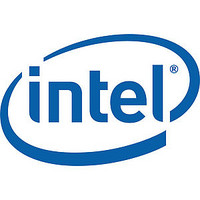m28f010 Intel Corporation, m28f010 Datasheet - Page 8

m28f010
Manufacturer Part Number
m28f010
Description
1024k 128k X 8 Cmos Flash Memory
Manufacturer
Intel Corporation
Datasheet
1.M28F010.pdf
(22 pages)
Available stocks
Company
Part Number
Manufacturer
Quantity
Price
Company:
Part Number:
M28F010
Manufacturer:
MINDSPEED
Quantity:
30
M28F010
ming Characteristics and Waveforms for specific
timing parameters
Program-Verify Command
The M28F010 is programmed on a byte-by-byte ba-
sis Byte programming may occur sequentially or at
random Following each programming operation the
byte just programmed must be verified
The program-verify operation is initiated by writing
C0H into the command register The register write
terminates the programming operation with the ris-
ing edge of its Write-Enable pulse The program-ver-
ify operation stages the device for verification of the
byte last programmed No new address information
is latched
The M28F010 applies an internally-generated mar-
gin voltage to the byte A microprocessor read cycle
outputs the data A successful comparison between
the programmed byte and true data means that the
byte is successfully programmed Programming then
proceeds to the next desired byte location Figure 4
the M28F010 Quick-Pulse Programming algorithm
illustrates how commands are combined with bus
operations to perform byte programming Refer to
AC Programming Characteristics and Waveforms for
specific timing parameters
Reset Command
A reset command is provided as a means to safely
abort the erase- or program-command sequences
Following either set-up command (erase or program)
with two consecutive writes of FFH will safely abort
the operation Memory contents will not be altered
A valid command must then be written to place the
device in the desired state
EXTENDED ERASE PROGRAM CYCLING
EEPROM cycling failures have always concerned
users The high electrical field required by thin oxide
EEPROMs for tunneling can literally tear apart the
oxide at defect regions To combat this some sup-
pliers have implemented redundancy schemes re-
ducing cycling failures to insignificant levels Howev-
er redundancy requires that cell size be doubled
an expensive solution
Intel has designed extended cycling capability into
its ETOX-II flash memory technology Resulting im-
provements in cycling reliability come without in-
creasing memory cell size or complexity First an
advanced tunnel oxide increases the charge carry-
ing ability ten-fold Second the oxide area per cell
subjected to the tunneling electric field is one-tenth
that of common EEPROMs minimizing the probabili-
8
ty of oxide defects in the region Finally the peak
electric field during erasure is approximately 2 MV
cm lower than EEPROM The lower electric field
greatly reduces oxide stress and the probability of
failure increasing time to wearout by a factor of
100 000 000
The device is programmed and erased using Intel’s
Quick-Pulse Programming and Quick-Erase algo-
rithms Intel’s algorithmic approach uses a series of
operations (pulses) along with byte verification to
completely and reliably erase and program the de-
vice
QUICK-PULSE PROGRAMMING ALGORITHM
The Quick-Pulse Programming algorithm uses pro-
gramming operations of 10 ms duration Each opera-
tion is followed by a byte verification to determine
when the addressed byte has been successfully pro-
grammed The algorithm allows for up to 25 pro-
gramming operations per byte although most bytes
verify on the first or second operation The entire
sequence of programming and byte verification is
performed with V
trates the Quick-Pulse Programming algorithm
QUICK-ERASE ALGORITHM
Intel’s Quick-Erase algorithm yields fast and reliable
electrical erasure of memory contents The algo-
rithm employs a closed-loop flow similar to the
Quick-Pulse Programming algorithm
neously remove charge from all bits in the array
Erasure begins with a read of memory contents The
M28F010 is erased when shipped from the factory
Reading FFH data from the device would immedi-
ately be followed by device programming
For devices being erased and reprogrammed uni-
form and reliable erasure is ensured by first pro-
gramming all bits in the device to their charged state
(Data
Quick-Pulse Programming algorithm
mately two seconds
Erase execution then continues with an initial erase
operation Erase verification (data
address 0000H and continues through the array to
the last address or until data other than FFH is en-
countered With each erase operation an increasing
number of bytes verify to the erased state Erase
efficiency may be improved by storing the address of
the last byte verified in a register Following the next
erase operation verification starts at that stored ad-
dress location Erasure typically occurs in one sec-
ond Figure 5 illustrates the Quick-Erase algorithm
e
00H) This is accomplished using the
PP
at high voltage Figure 4 illus-
e
FFH) begins at
to simulta-
in approxi-












